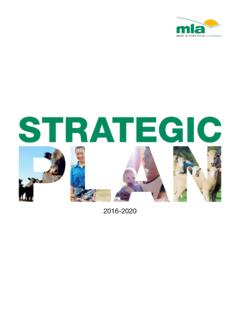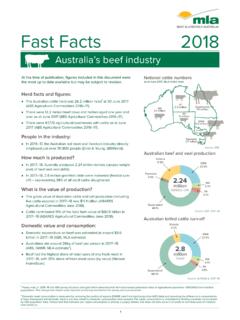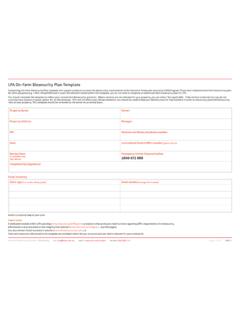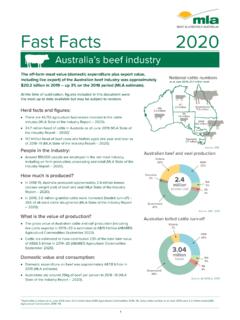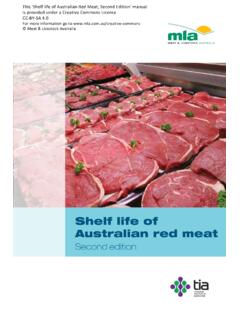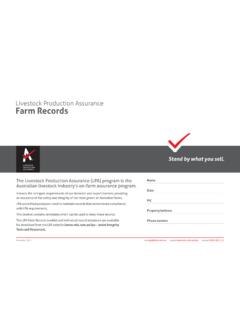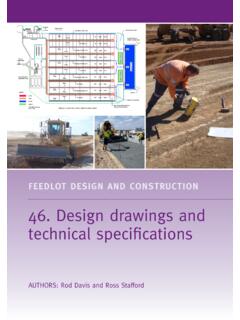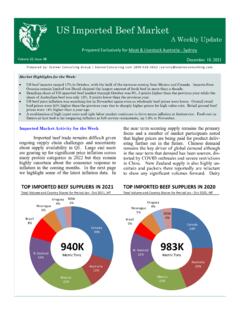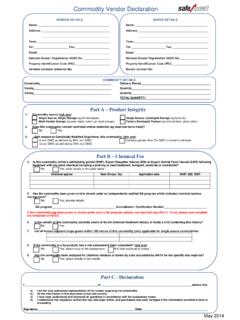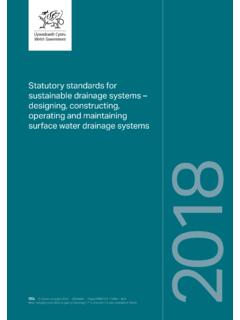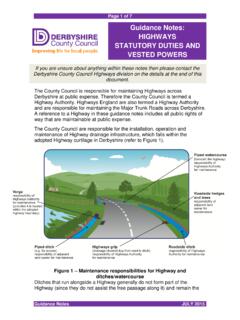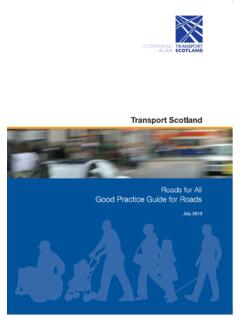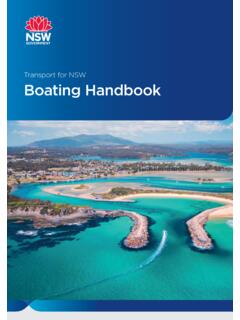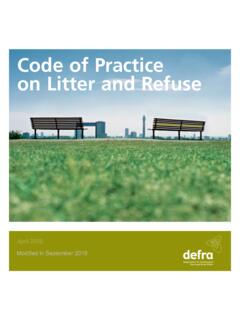Transcription of 14. Water reticulation system - Meat & Livestock Australia
1 14. Water reticulation systemAUTHOR: Rod Davis144. fl 14. Water reticulation systemIntroductionAn adequate supply of Water is required for cattle to drink, in feed preparation and for sundry other uses. Planning and designing a feedlot Water reticulation system for each feedlot depends on its access to Water , location, site, size and operation. The basic principles in the design of a Water reticulation system are reliability, redundancy, utility and economy. Utility can be defined as a reliable, easy to operate, trouble-free system that delivers Water in the quantity and at the points required, with no more attention than routine maintenance. Economy can be defined as a system installed at a minimum expense, without sacrificing utility that will operate for its design life without ongoing capital expenditure or excessive maintenance objectivesThe Water reticulation system should ensure the layout, pipe size and pump capacity of the system can efficiently supply the feedlot with Water be sized to supply Water throughout the feedlot during peak demand periods incorporate a storage system to cater for fluctuations in supply and demand and to act as an emergency supply in the event Water supply failure allow easy maintenance to pipes.
2 Valves and pumps allow maintenance on some parts of the system while maintaining a continuous Water supply to all areas of the feedlot be protected from damage by cattle and machinery supply fresh, cool, clean palatable and high quality drinking Water to the requirementsCompliance with Australian Animal Standards and Guidelines for Cattle (DAFF, 2013). National Guidelines for Beef Cattle Feedlots in Australia (MLA, 2012a). These state that a feedlot requires a secure Water supply, that security must be in both a legal ( a legal right to the required volume) and a physical sense ( the physical ability to pump, store, and deliver the required volume of Water ).
3 National Beef Cattle Feedlot Environmental Code of Practice (MLA, 2012b). Performance measure states that a feedlot has a Water supply able to sustain the operations of the feedlot under normal conditions. National Feedlot Accreditation Scheme (AUS-MEAT, 2013).3fiflfl fl 14. Water reticulation systemTechnical requirementsFactors to be considered when planning and designing a Water reticulation system include Volume of Water required Water is needed for cattle drinking, feed processing, cleaning (including yards, machinery and cattle washing) and other general operations around the feedlot. Section 4 Water requirements provides information on the Water requirements at Australian feedlots.
4 DistanceMoving Water takes energy to overcome pipe resistance and changes in ground elevation. The distance between Water sources, temporary supply and delivery point will affect capital expenditure and operational costs. Design flow rate and pressureA reticulation system must be sized to supply Water at sufficient pressure throughout the feedlot during peak demand Water demand can be estimated by understanding the diurnal pattern of intake and by studying historical climate records. See Section 4 for calculation of peak reticulation systemDesigning a feedlot Water reticulation system can be complex. Professional assistance from a suitability qualified and experienced Water engineer or a company specialising in Water supply and reticulation systems should be obtained to determine system layout, pumping capacity and pressure, pipeline sizes and valve locations.
5 The designer should locate air relief valves, vacuum relief valves, isolation valves, Water storage and thrust blocks as well as pipeline and fittings. Water reticulation systems can be either gravity flow or pressurised or a combination of both. Gravity flow avoids any potential equipment failure in a pumped flowIn a gravity pipeline system , the Water storage is higher than all points in the delivery pipeline and no pump is required downstream of the storage. For example, the Water supply may be located at the highest point at the site and at the end of a pumped pipeline. This is the preferred type of system for cattle drinking Water supply as it has less reliance on infrastructure ( electrical power, pumps).
6 A gravity system is usually characterised by being installed on a positive grade in the direction of flow for its entire length. Air locks at significant high points in the pipeline are prevented by installing air valves or stand pipe vents. Air valves will not work if pressure is too low. Water storage at a higher elevation than the feedlot allows gravity flow of Water . A turkey nest storage situated high above the feedlot allows gravity flow of Water around the flow available from elevated placement of Water fl 14. Water reticulation systemFigure 1 Components of a Water reticulation systemPressurised systemPumps are commonly used to lift Water from a bore or Water stream (creek, river) to a Water storage at a higher elevation, or to pressurise the Water system to deliver it through a pipeline around the feedlot.
7 The design considerations in a pressurised system include pump type (centrifugal, turbine and positive displacement), pump capacity (single, multi-pump, distance and volume of Water to be transferred) and pump control (automatic pressure, timed, manual).Pipeline networkThe delivery pipeline is sized to carry the amount of Water required by the length of line, the difference in elevation and Water demand at each outlet. Pipeline sizes and features must be planned for each specific system based on the site and system of distribution networksBranched network This network is similar to the branching of a tree. It consists of main ( trunk ) line sub-mains branches.
8 The mainline is the main source of Water supply. There is no Water distribution to watering points from the mainline. Sub-mains are connected to the main line and are usually located along the main service or feed delivery roads. Branches are connected to the sub-mains and the watering points are located on the branches (Figure 2). Advantages simple method of Water distribution simplified delivery calculations economical dimensions of the pipes fewer cut-off valves. Pumped reticulation system with a standby pump and associated controllers and valvingA pumped reticulation system manifold with various take-offs and shut-off valves for flow controlWater troughsFeedlot pensGravity feedreticulation systemMain pipeTemporary storageMain pump5fiflfl fl 14.
9 Water reticulation systemFigure 2. Branched Water reticulation networkDisadvantages The area or zone receiving Water from a pipe that is broken is without Water until the repair is completed. This can be a major issue when supplying drinking Water to cattle. There are many dead ends where Water does not circulate but remains static. Sediments can accumulate in the dead end with potential bacterial growth. Drain valves at dead ends allow stagnant Water to be drained out periodically, wasting a significant amount of Water . If the feedlot undergoes expansion, the pressure at the end of the line may become undesirably low as additional areas are connected to the Water supply system .
10 Grid pattern with loopsIn a grid pattern with loops supply system , all the pipes are interconnected in loops with no dead ends. Water can reach any point from more than one direction thus providing supply in case of pipeline blockage or breakage, and more even pressure at all As Water in the supply system can flow in more than one direction, stagnation is reduced. Water will flow to an area from an alternative direction in case of repair or break down in a pipe. Strategically located valves allow sections of line to be isolated for maintenance or repairs whilst supply continues to other watering points. Water reaches all points with minimum head loss.
